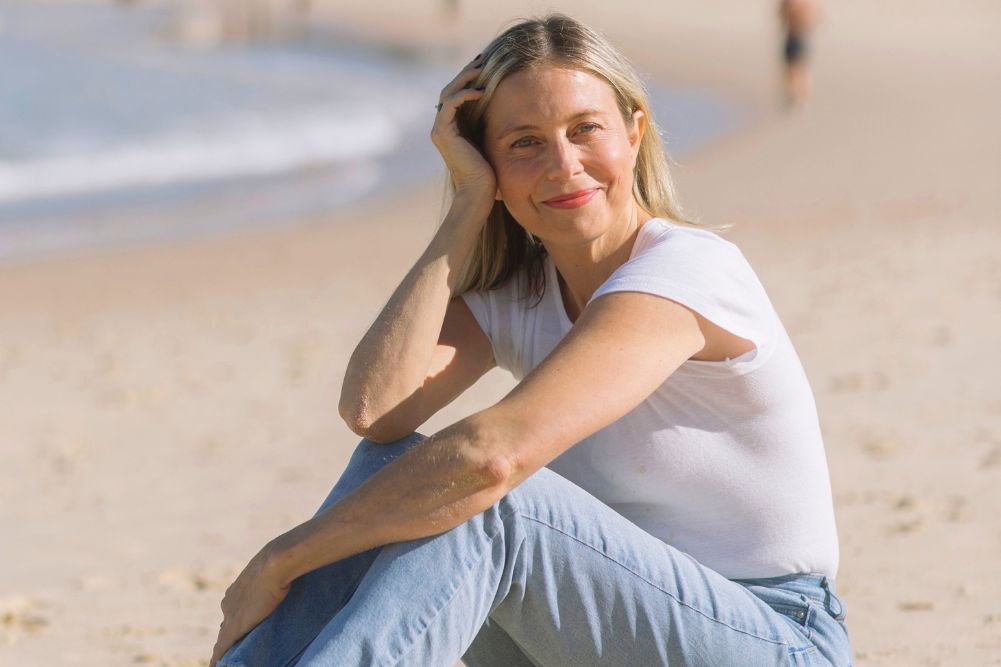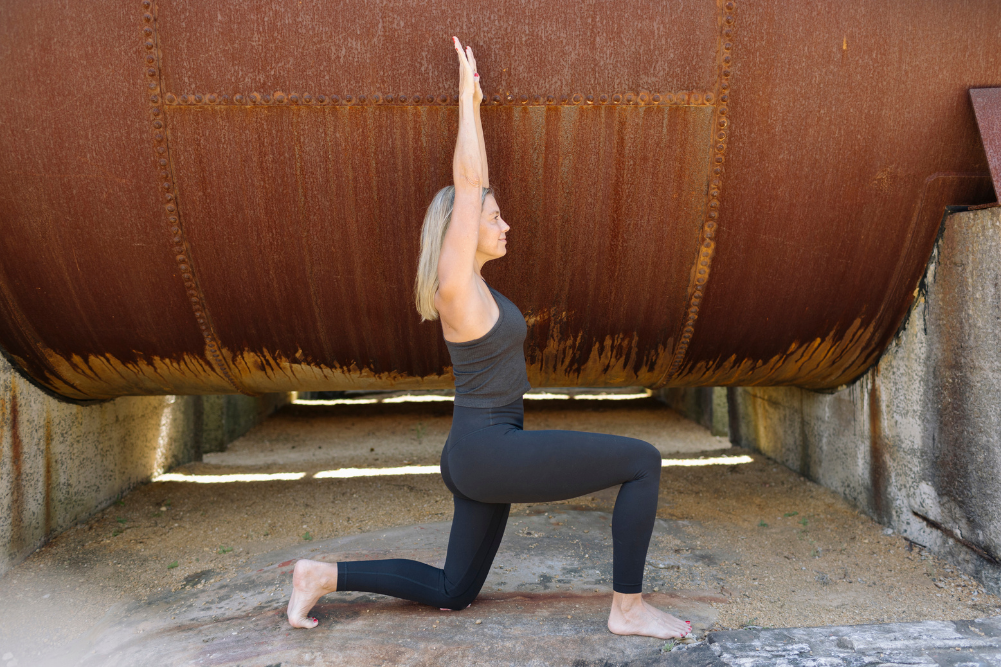Warm up with Bikram yoga
Bikram yoga is a great way to tone your body and revitalise your mind. It’s practised in a heated room to maximise flexibility and circulation, which means you can keep warm in winter and keep fit and healthy at the same time! Drawn from traditional yoga techniques, Bikram yoga is known by its devotees and practitioners as being much more than exercise. It is regarded as a form of therapy that benefits the body, calms the mind and rejuvenates the soul. By creating an alliance of the mind, body and spirit, Bikram yoga promotes a conscious feeling of “oneness” that is said to promote wellbeing, reduce stress and optimise the body’s internal systems.
What is Bikram yoga?
Bikram yoga, created by Yogiraj Bikram Choudhury, consists of a demanding yoga series of 26 postures (asanas) and two breathing exercises (pranayama), all completed in a specific order. Each asana is done twice, each one stretching and strengthening specific muscles, ligaments and joints that are needed for the next posture. Known commonly as “hot yoga”, the series of poses was designed by Bikram to be practised in a room heated to 39 degrees in order to assist circulation and promote detoxification. The heated room provides not only a tempting place to work out when the temperature drops below 15 degrees, but also an environment that increases strength, concentration and endurance. The series of 26 postures takes 90 minutes to complete.
The heated environment allows your body to work more deeply into the postures and lessen the occurrence of potential injuries such as muscle strains common in other forms of exercise.
Who is Bikram?
Yogiraj Bikram Choudhury is the founder and creator of the worldwide Yoga College of India™. Born in Calcutta in 1946, Bikram began practising yoga at the age of four with the renowned physical culturist of the time, Bishnu Ghosh, who was the younger brother of Paramahansa Yogananda, author of The Autobiography of a Yogi and founder of the Self-Realisation Fellowship in Los Angeles. Bikram diligently practised yoga for at least four to six hours every day at Ghosh’s College of Physical Education in Calcutta. By the age of 13, he won the National India Yoga Championship and was undefeated for the following three years. He later retired as the undisputed All-India National Yoga Champion.
At the age of 17, Bikram was struck by a serious injury to his knee during a weightlifting accident after which doctors said he would never walk again. Rejecting their opinions and advice, Bikram had himself carried back to Bishnu Ghosh’s school. A mere six months later, Bikram’s problematic knee had totally recovered through the practise of yoga. In doing this, Ghosh was the first to scientifically document yoga’s ability to help heal chronic physical ailments in the body.
Bikram then established several schools of yoga in India, which were very successful and motivated both Bikram and Ghosh to open more yoga schools across the globe, promoting the curative effects of yoga.
What makes Bikram yoga different?
Bikram yoga is different from other types of yoga for a number of reasons. The most obvious difference that sets Bikram Yoga apart from others is the heated room, which provides practitioners with a challenging yet beneficial and rewarding environment to work in. The heated temperature leads to heavy sweating, which helps to release toxins and purify the body.
Weight loss can be made easier as warmed muscles can burn fat more easily. The output of cells that fight infection also increase while the heart rate is elevated.
All classes are beginner-friendly and the sequence of the postures is done in the same way every time, making them easier to commit to memory and allowing for a sense of comfort in knowing which pose is coming next and why.
All Bikram teachers are required to train intensively for nine weeks with Bikram himself and have to recertify every three years. Each Bikram yoga teacher is committed to teaching and the practice of the series of poses, so you will always know you are in good hands when attending a Bikram yoga class.
It’s also good to know that in Bikram yoga there is not such thing as a perfect pose. The emphasis is on what you put into the series of asanas and the effect they have on the individual.
About 10 Bikram classes are usually recommended over a period of a month to maintain maximum benefit and after 13 classes you will most likely notice and feel significant results inside and out. All in all, Bikram is the most intensive yoga any enthusiast can partake in. As challenging as it is rewarding, Bikram is one winter workout worth exploring.
For the body
Bikram yoga works by contracting and stretching muscles, which increases circulation by moving fresh, oxygenated blood all over the body. The series of postures work each muscle, joint, ligament and tendon as well as internal glands and organs. Joint mobility and range of motion are increased and working against gravity for balance serves as strength training. Flexibility and energy levels are enhanced, as is cardiovascular strength and respiratory balance through the series of structured poses.
As Bikram promotes such positive outcomes on the inside, noticeable results are also evident on the outside, which is a nice incentive to being fit and healthy. By toning and strengthening all major muscle groups, Bikram yoga promotes weight loss and muscle tone and is said to give a healthy glow to the skin. Detoxifying the body and boosting the circulatory system — known to have a positive effect on the metabolism — also promotes weight loss and muscle tone.
Practising Bikram yoga enables bodily systems and functions such as digestion, respiration, endocrine and elimination to work in harmony, resulting in a heightened state of wellbeing.
“Physically, the series is amazing and detoxifies your entire body,” says Justine Monahan, a fully qualified Bikram Method yoga teacher who discovered Bikram yoga nine years ago and has been practising it ever since. “The room is intentionally heated to 39 degrees, which warms up the body and provides optimum conditions in order to improve the body’s internal systems. It also allows you to work safely and more deeply into the postures, giving faster results in the process.”
For the mind
Initially looking for a “different” form of exercise from running, walking or the gym, Justine stumbled across a yoga school and fell in love with hot yoga instantly. Having always lived an active lifestyle and been conscious of keeping fit, Justine felt the intensity of Bikram yoga made her feel different afterwards compared with other types of yoga and exercise.
“The physical practice itself was exhausting at first, but it was what I was looking for — a real workout. After a while, though, it was the way the class made me feel after it was done that kept me going back. It was the mental stillness and inner calm I was feeling for the first time in my life that I was enjoying. It was and still is such a blissful experience, which is why I became a teacher,” says Justine.
The heated room in which the asanas are practised is challenging for both the mind and body. The mind is forced to overcome its environment and a great deal of focus and concentration is needed for each pose. This mindfulness allows for an increase in determination, patience and inner strength. The sense of accomplishment in pushing both your mind and body to achieve a united goal is a liberating and enlightening feeling, one of the reasons why Bikram yoga has grown so popular since it first surfaced in the 1970s. It has also had proven results in the treatment of stress relief and emotional disorders, such as depression and insomnia, by encouraging a sense of focus, control and “mind over matter”.
“Essentially, the series teaches you your mind is the key to your life. If you can come to know, understand and be patient with it, you will live a happy, rewarding and stress-free life — most of the time, anyway!” enthuses Justine. “I believe the results of this series are so profound they must be shared with as many people as possible,” she adds.
For the soul
Bikram yoga can induce a sense of meditation through focus and calm. It’s a good way to look and feel your best, but it also has an enriching element that many find powerful and fulfilling. “Bikram yoga provides me with my daily meditation,” explains Justine. “It clears my mind and helps me to really focus on the things in my life that are most important.” It is this “centring” effect due to the alignment of the body, mind and soul in one determined consciousness that yoga devotees find so rewarding.
“Bikram yoga is part of my daily life. It’s just like brushing my teeth. It is my time, which is very important as a wife and a mum. It is an activity that I choose to do as it helps me to be the person I want to be. It not only has a positive and magical impact on me but also on all those around me,” says Justine. “I am very proud to say I have communicated Bikram’s message to thousands of people around the world. As a teacher, that is my job and it’s the most fulfilling and enriching job I have ever had. We were born to give and give and keep giving!”
It is a particular combination of the physical, mental and spiritual that produces such immediate and definite results for those who experience Bikram yoga and perhaps why it draws such avid practitioners from all corners of the globe.
Explore your physicality and quieten your mind this winter with the Bikram series of asanas. As tempting as it is to stay home with lashings of piping-hot comfort food, yoga is guaranteed to make you feel more active, rejuvenated and better about yourself, inside and out, and even boost your immunity against the dreaded winter flu and other nasties. As avid Bikram practitioner and teacher Justine says, “Just show up and do your best with an open heart and a happy face. Have no expectations and just enjoy the journey.”
Alternate ways to get fit and warm up with yoga
- Hatha yoga is a very general term that encompasses many of the physical types of yoga. Hatha yoga classes are usually slow-paced and gentle. Hatha is a great way to ease into yoga through basic poses.
- Vinyasa, which means breath-synchronised movement, is a more vigorous yoga style that is based on a series of sun salutation poses, which the class will typically begin with before moving into more intense stretching.
- Ashtanga, often called “power yoga”, is a fast-paced, intensive style of yoga that consists of a set series of ordered poses. Ashtanga is physically demanding due to its constant flowing movements.
- Iyengar yoga is based on the teachings of the yogi B.K.S Iyengar and has an emphasis on bodily alignment. Iyengar practice usually emphasises holding poses over long periods of time as opposed to other styles such as Ashtanga.
- Kundalini yoga has a focus on breathing in conjunction with physical movement, with the purpose being to free energy in the lower body and allow it to move upwards. All asana practices use breath control, but Kundalini uses rapid and repetitive movements as well as chanting.







